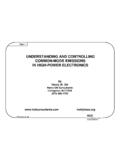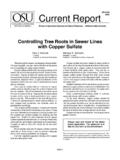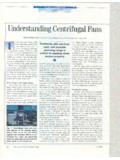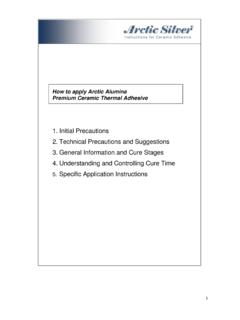Transcription of Understanding CNC Routers - Solutions for Wood
1 Creating forest sector Solutions Understanding CNC Routers FPInnovations brings together Feric, Forintek, Paprican and the Canadian Wood Fibre Centre of Natural Resources Canada, to form the world's largest private, not-for-profit forest research institute. FPInnovations works towards optimizing the forest sector value chain. It capitalizes on Canada's fibre attributes and develops new products and market opportunities within a framework of environmental sustainability. The goal is leadership through innovation and a strengthening of the Canadian forest sector's global competitiveness through research, knowledge transfer and implementation. The Forintek Division provides the industry with innovative Solutions , sound scientific advice, direct technical support, and relevant market and economic studies. It creates Solutions for wood from forest to market. Understanding CNC Routers First Edition Alain Albert FPInnovations Forintek Division Contents About This Why Create a Book on CNC Routers ?
2 2. Who Needs a CNC Machine?..3. What is a CNC Router?..4. The History of Definition ..6. Benefits of CNC The Appeal of Precision ..12. Embedded Cut Quality ..14. Frame Accuracy ..15. Positioning Maximizing Performance ..17. CNC in the Things To Consider ..19. Space ..20. Electrical i Plant Tools ..23. Computer Dust The Components of a CNC 26. Full colour display ..27. Program storage ..28. Hand-held programmer ..28. Sealed air-conditioned cabinet ..28. Three-dimensional axis Parametric design functions ..29. Raw design files ..30. Panel saw programs or Microsoft Excel files ..30. Profiles without custom tooling ..30. Reacting to problems at the machine ..31. Error Automatic tool management system ..31. Preventative maintenance scheduling ..32. Direct networked link to technical assistance ..32. Switch between code and plain English ..33. Depth oscillation ..33. ii Proper manuals and component labelling.
3 33. Easy to update and upgrade .. 34. Work Tables .. 34. Flat 34. T-slot Pod and Universal Matrix The Cartesian coordinate Linear and rotational 38. 3 & 5 38. Rapid vs. cutting 38. Absolute vs. incremental motion ..39. Drive Stepper 40. DC servo AC servo 43. 44. High frequency motor spindles .. 44. Tool 46. 46. Multiple 46. Tool Automatic tool High speed steel (HSS)..50. Solid Diamond Tool Tool Chip iii Cutting 54. Feed Climb and conventional Rough cutting and finish 56. Ramping and 56. Tab and 56. Work Conventional vacuum 60. Pod and 60. Combination pod/flat 60. High flow 60. Roller Vacuum Regenerative vacuum 63. Dry running rotary vane vacuum 63. Oil recirculating rotary vane vacuum 64. Positive displacement rotary 64. Rotary claw vacuum 65. Rotary screw vacuum 65. Liquid sealed 65. Material 66. Scissor 66. Vacuum Automated material handling ..67. Router 68. X-Y Moving iv Moving Industrial Other Categories of CNC 77.
4 Parametric Nesting Post 82. Label 83. Optical 83. 83. Tool length 84. Laser 84. Vinyl 84. Coolant Rotating Floating cutter 86. Plasma 86. Aggregate 86. Justifying the Cost of Light 88. Medium Industrial v 90. Installation and 90. The 90. An The 92. The New New 94. New 96. 98. In making this iv about this book About This Book Why Create a Book on CNC Routers ? Who Needs a CNC Machine? What is a CNC Router? 1. Understanding CNC Routers Why Create a Book on CNC Routers ? There is a lot of anecdotal information on CNC (Computer Numerical Control) technology and machine vendors are often quick to highlight certain features of their products while minimizing other very important characteristics. The truth is that in every case the purchaser must make compromises to come up with the solution that best fits their needs. Not one application is exactly the same and not one machine will be the perfect fit in every shop.
5 This book was created to give potential consumers of CNC Routers a basic Understanding of the inner workings of the technology. A better informed consumer can then make better purchasing decisions and increase the chance of successful integration of the technology in his or her shop. 2. about this book Who Needs a CNC Machine? What does a CNC do? Will it replace workers? Is my job in jeopardy? These are some of the questions you will face from your employees when you are thinking of buying a CNC machine. While it will probably replace tedious repetitive jobs with higher skilled ones, most companies who purchase this technology end up growing and hiring more employees. The work that happens downstream from the CNC machine will also be impacted. The parts are likely to be more accurate and in the case of nested based systems, they will remain grouped together, simplifying subsequent processes.
6 3. Understanding CNC Routers What is a CNC Router? In short, CNC technology is not very complicated. It is a tool controlled by a computer. It only becomes more sophisticated when considering how the computer controls the tool. The illustration below shows what a bare bones CNC machine might look like minus the controller. 4. The history of cnc The History of CNC. Definition History 5. Understanding CNC Routers Definition CNC = Computer Numerical Control. A computer controller reads G-code or machine language instructions and drives a tool. The NC (Numerical control) program is a detailed set of step by step instructions that tell the machine which path to follow and which operations to perform. History NC or simply Numerical Control was developed in the late 1940s and early 1950s by John T. Parsons in collaboration with MIT. (Massachusetts Institute of Technology).
7 It was developed to help in the post war manufacturing effort. Aircraft parts were becoming more complex and required a level of precision that human operators could not achieve. Complex machined parts could no longer be made by skilled operator alone Photo courtesy of CNC Software Mastercam 6. The history of cnc At first machines were hardwired, and then instructions were given via punched tape starting in 1952. Five years later, NC machines were being installed in metal working production environments all over the United States. By the mid 1960s, NC technology was playing a dominant role in the industry. Most machine programs were recorded on a punched paper or aluminium tape until about 1980. In the 1970s and 80s, the growth of microprocessor technology made it possible for computers to be connected directly to NC machines using cables, hence the term CNC. Fundamentally, numerical control is a technique for controlling machinery rather than a specific type of machine.
8 CNC machines were originally built for machining metal. They were subsequently adapted for other industries such as wood, fabric, foam, and plastics to name just a few. All these machines have some features in common which are: a program (instructions). a controller a machine tool. Wood Routers differ from their metalworking cousins in that they are not subjected to the same forces of load and vibration. They spin faster, up to 24000 rpm and have larger work tables; up to 5'x20'. They use smaller tools and tool holders and work at faster machining speeds; up to 1200 inches per minute or 30 m/min. Another difference is that they don't require the same level of accuracy. Metalworking applications usually require much greater precision and tighter tolerances than for machining wood. 7. Understanding CNC Routers Mr. Isao Shoda claims to have made the first NC Router in the world and he exhibited it at the International Osaka Fair in 1968.
9 (Model: NC-111A). 1968 Shoda exhibited the first ever NC wood router (NC-111A ) at the International Osaka Fair Photo courtesy of Shoda Iron Works Co. Ltd. Early in the 1970s the advent of the first CNC appeared in the aerospace industry (controlled by a Mainframe Computer). In the late 70s NC drilling machines were the first to appear in the wood industry. They were called point-to-point machines because they moved a drill from one point to another and drilled a hole. The term point-to-point was coined from an electronics circuit assembly method from pre-1950 which required professional electronic assemblers to operate from books of photographs, and follow an exact assembly sequence to ensure that they did not miss any components.: Other events that impacted CNC technology were: Mid-1970: first microprocessor (Intel 8080). End of the 1970s: First 5 axis CNC in woodworking.
10 CNC Routers were first used by the aerospace industry to cut complex patterns out of sheets of aluminium. Bolting the aluminium sheet to the table surface was a lengthy process. In the early 80s, the 8. The history of cnc engineers at Thermwood came up with the idea to draw air through huge butcher blocks made of Balsa wood. Since Balsa wood lets air pass freely through the end grain, they added a high flow vacuum to hold the aluminium sheets down without the use of mechanical fasteners. They later realized that particleboard had similar porous properties and universal vacuum tables were born. By the early 1980s, CNC technology was used in many types of machinery in the secondary woodworking industry. Some examples follow: Point-to-point systems such as boring machines have been used since the beginning of the NC era. Since there was no contact between the part and the tool until a pneumatic drill was activated, it mattered little which path the spindle took to reach its final destination, hence the term point-to-point.






